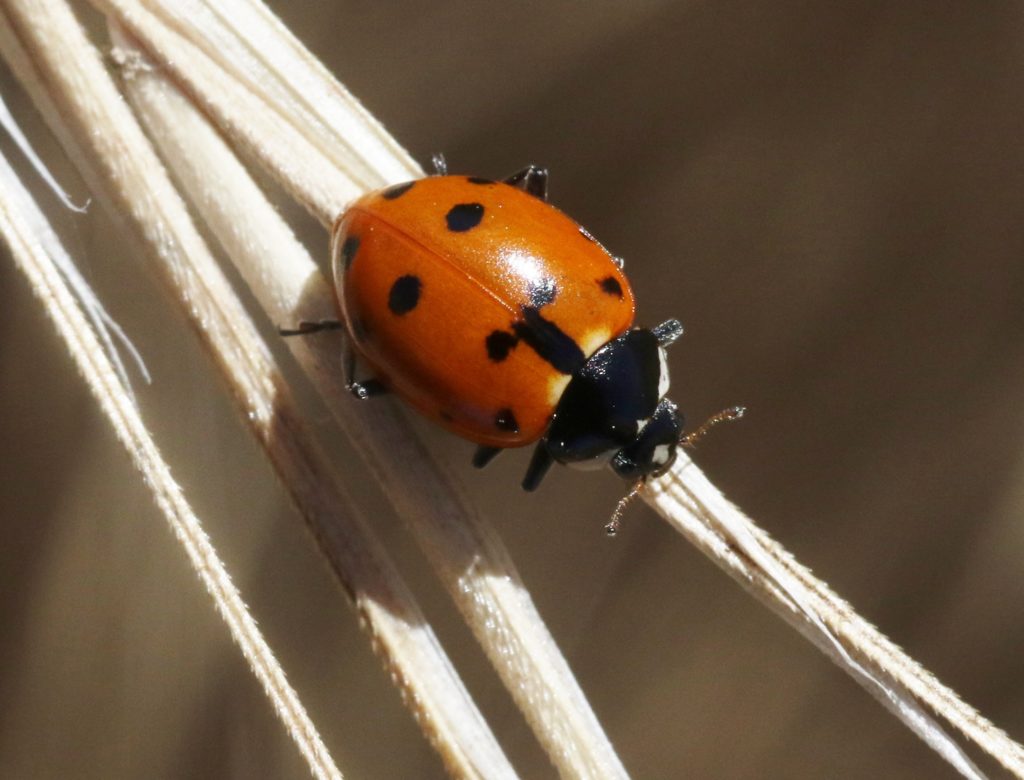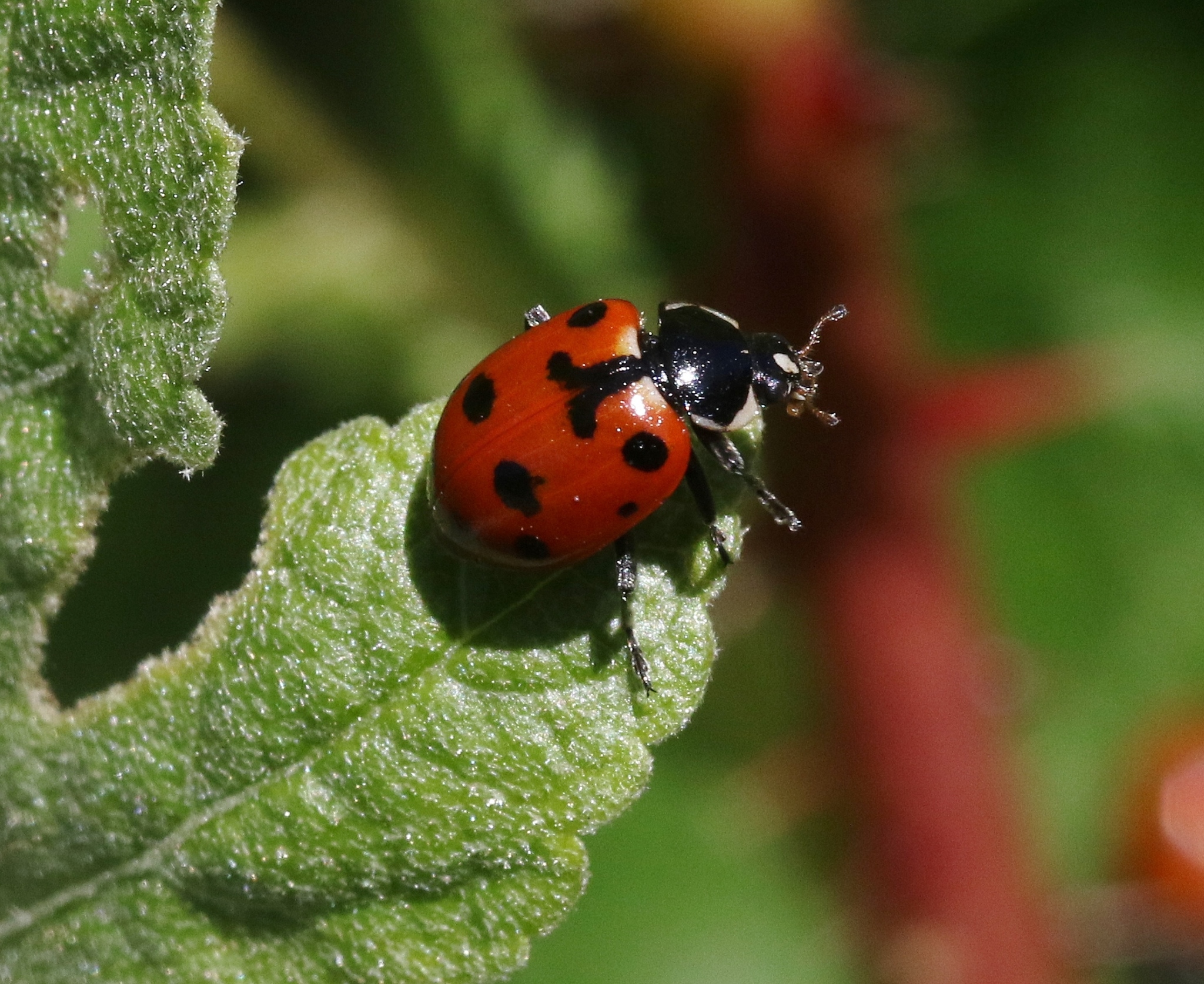
Five-spotted Lady Beetle (photographed in California) © James Bailey
The Five-spotted Lady Beetle is native to North America. Its wing covers range from red to reddish-orange in color and its spot pattern varies.
Status
Native
Listed as Apparently Secure in Alberta and the Northwest Territories. The Five-spotted Lady Beetle has not been ranked in the United States.
Last Seen
1890
Fun Fact
The Five-spotted Lady Beetle is primarily found in western North America, however there are some scattered records of it in the east.
Identification
The Five-spotted Lady Beetle is 4 to 7 mm in length, and is oblong in shape. Its markings are highly variable.
- Head: Black, with one pale spot in the center.
- Pronotum: Black, with one pale marking on either side of the front of the pronotum. The black portion of the pronotum mayor may not have three small pale spots, aligned in the shape of a triangle, pointing towards the head.
- Elytra: Vibrant red-orange in color. There are usually two light patches at the top inner corners of the elytra, near the pronotum. Markings are highly variable, sometimes with one black bar spanning both elytra at the top and four, rectangular-shaped black spots below. Other times, this beetle has no spots on the elytra, or has multiple small black spots, which are often concentrated towards the end of the beetle.
- Legs: Black.
- Often confused with: Glacial Lady Beetle, Convergent Lady Beetle, Transverse Lady Beetle, and the Seven-spotted Lady Beetle.
Habitat
Meadows, fields, agricultural lands, and prairies. Will also inhabit boreal forests.
General Range
Most populations are found west of Texas to the Pacific Coast, ranging north into Alaska. Scattered populations have been found across the Midwest through the Great Lakes region and east to the coast, ranging north throughout Canada.
Food
Aphids, insects, and insect eggs.
Life Cycle
The Five-spotted Lady Beetle seems to hibernate at elevations between 1677 and 3354 meters in the United States, and between 1250 and 2744 meters in Alberta, Canada, aggregating in the same locations each year. They overwinter on upper, exposed slopes with sparse vegetation, aggregating under rocks, debris, and logs; in crevices of rocks, logs, and pine cones; or at the base of Juniper trees. The Five-spotted Lady Beetle breeds before dispersal to the prairies, meadows, and fields that they forage in during the summer. Migration distances vary based on location.
More Information
You can find more information about Five-spotted Lady Beetles using the following links:
Vermont Distribution
Visit the iNaturalist Observation Map and Occurrence Records to find out where Five-spotted Lady Beetles have been seen in Vermont.







